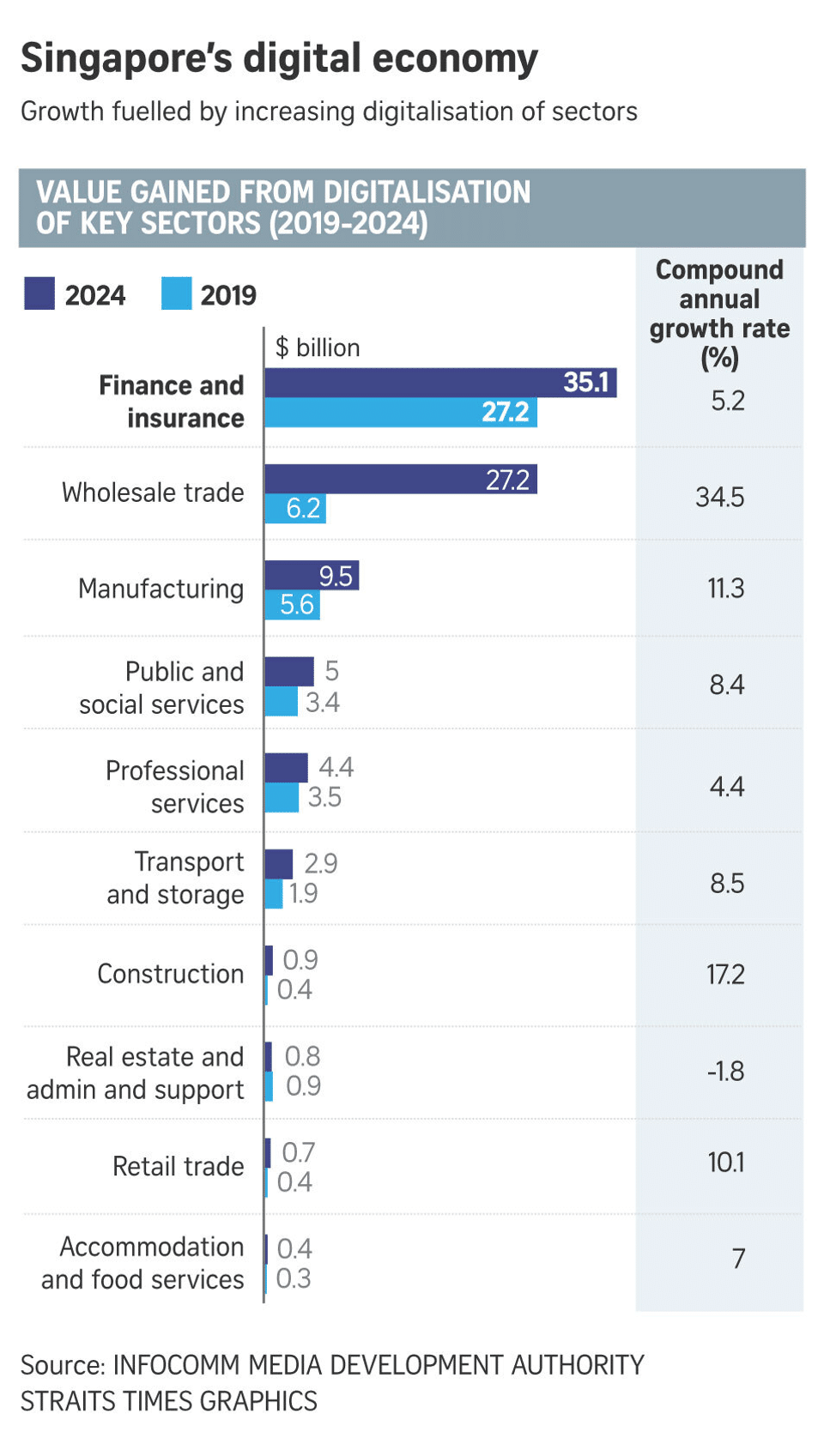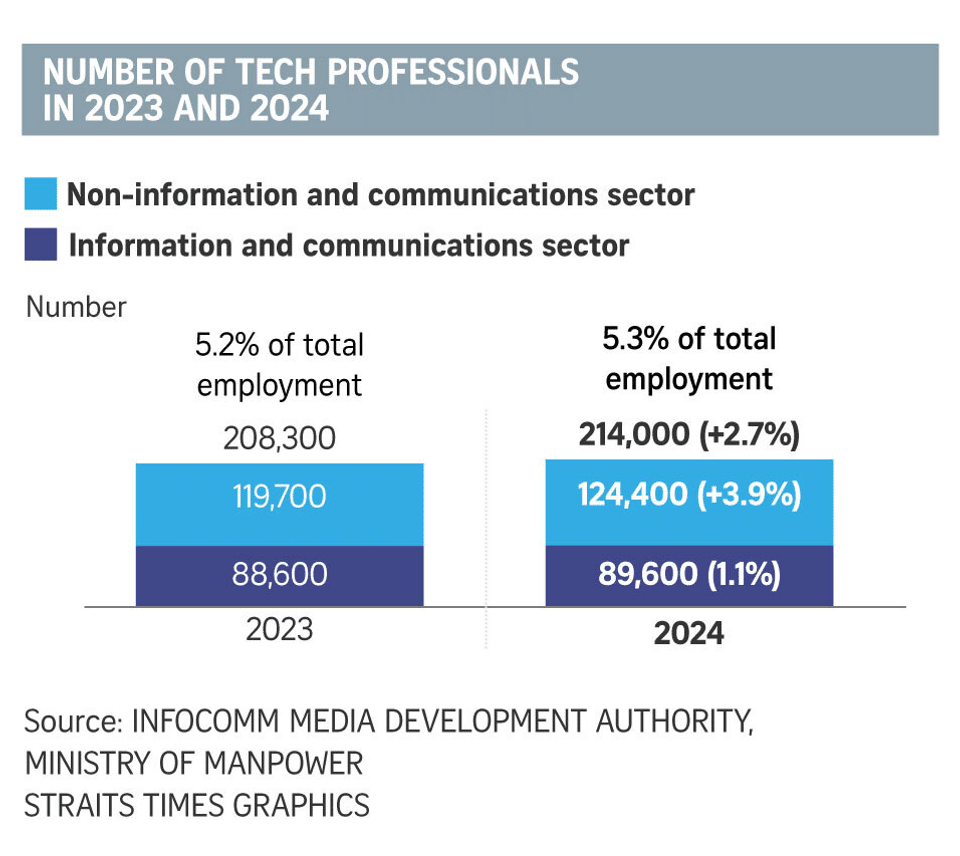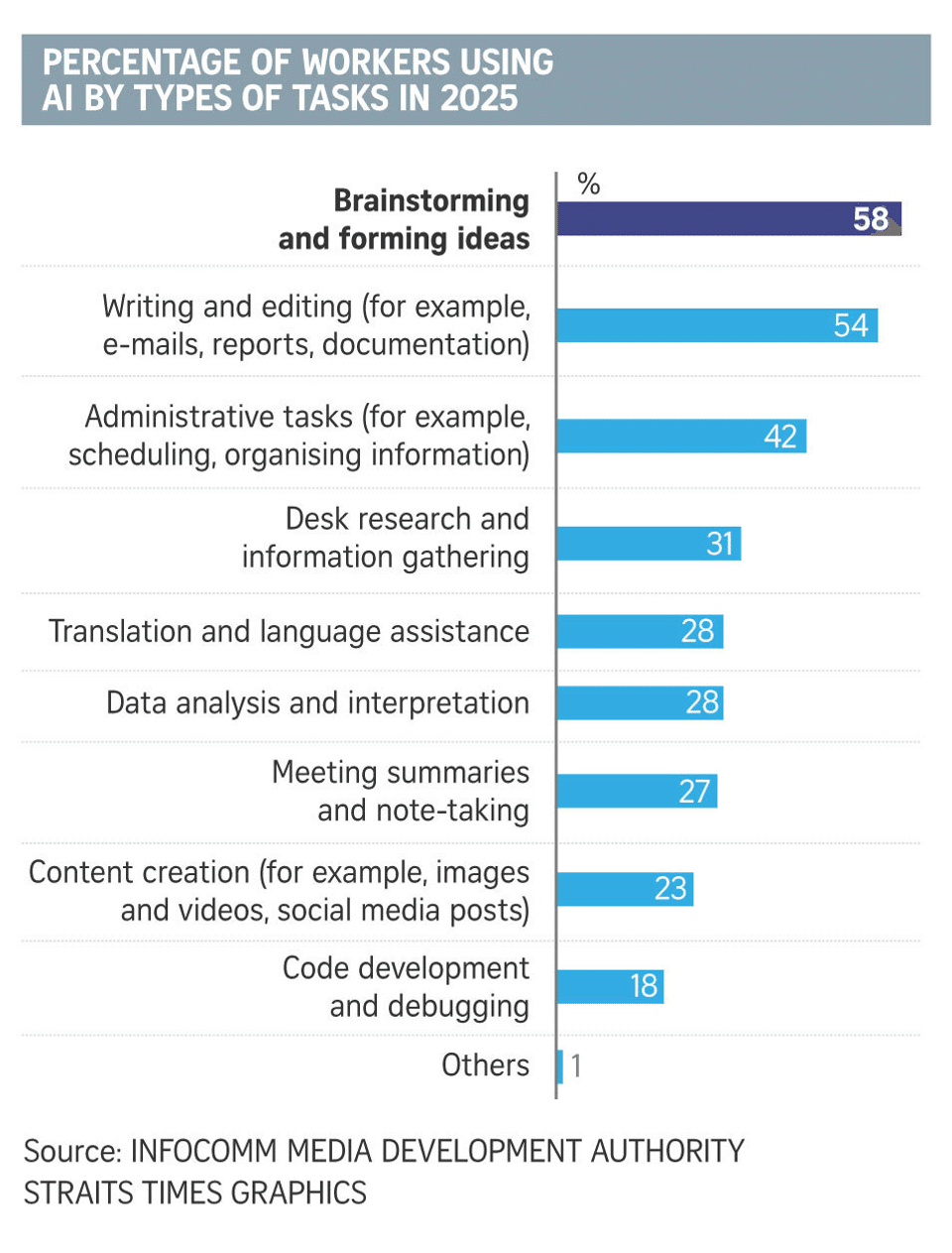Singapore’s digital economy contributed 18.6% to GDP, generated 214,000 tech jobs in 2024

(Photo credit: ST File)
Source: The Straits Times
In 2024, Singapore’s digital economy grew by $12 billion, contributing $128.1 billion or 18.6 per cent of gross domestic product (GDP), and generated 214,000 tech jobs.
Its contribution to GDP increased from 18 per cent in 2023 and 14.9 per cent in 2019.
According to the third edition of the Singapore Digital Economy Report released by the Infocomm Media Development Authority (IMDA) on Oct 6, most of the growth came from digitalisation in non-tech sectors rather than from tech firms.
The report calculates the digital economy based on two components.
The first is the value-add or economic contribution of the information and communications (I&C) sector, which comprises digital services typically associated with the tech industry like telecommunications, computing and software.
The second is the value-add that non-digital industries have from embracing digital technologies and solutions.
The report found that the bulk of the contributions to Singapore’s digital economy came from digitalisation across non-I&C sectors.
The finance and insurance sector remained the largest contributor to growth, followed by wholesale trade and manufacturing.

The report also pointed out that despite the tech sector’s cautious hiring outlook globally and domestically in 2024, the number of tech professionals in Singapore continued to expand, rising from 208,300 in 2023 to 214,000 in 2024.
Job roles related to artificial intelligence (AI) and data, and cyber security were among tech jobs with the fastest growth in 2024.
Growth in the hiring of tech professionals was primarily driven by non-I&C sectors, which saw a 3.9 per cent increase in tech jobs, outpacing the 1.1 per cent growth within the I&C sector.
Tech jobs also continued to offer good wages. Median monthly wages for tech workers who are Singaporeans or permanent residents remained much higher at $7,950, compared with the median monthly wage of $4,860 for all other occupations in 2024.

Mr Kiren Kumar, IMDA’s deputy chief executive, said these increases have come despite a wave of layoffs in the sector over the last few years. He attributed the net increase to companies in non-tech sectors digitalising.
“They need to build their own solutions, or integrate solutions into their own organisations, whether they’re a manufacturing company, a wholesale trade company or a bank,” he said.
According to figures from Layoffs.fyi, which tracks layoffs in the technology sector across the world, 548 companies globally terminated the services of more than 150,000 employees in 2024. Some tech jobs in Singapore were also affected even though the numbers have not been disclosed.
The IMDA report also found that there was a shift in demand involving tech skills.
Programming languages such as Python and SQL were among the more highly sought-after tech skills over the past five years.
In 2024, close to a quarter of all tech job postings required Python, which is an increase of 9 percentage points from 2019. Meanwhile, SQL was required in a fifth of tech job postings, an increase of 5 percentage points.
“The strong demand is likely a reflection of the applicability of these skills across a wide range of functions, such as data analytics, automated workflows and development of machine learning models,” said the IMDA report.
Between 2019 and 2024, there was also a marked increase in the share of tech job postings that demand skills associated with cloud platforms and scalable digital infrastructure.
“This aligns with the rising adoption of cloud-native infrastructure among firms and underscores the increasing need for tech professionals who can effectively harness cloud-based capabilities to develop and deploy digital solutions at scale,” said the report.
In contrast, tech skills associated with web development like JavaScript became less prominent.
The share of tech job postings requiring AI skills like machine learning, natural language processing and neural networks grew from 11 per cent in 2019 to 14 per cent in 2024.
This growth was driven by increases in demand across all sectors. But the I&C sector accounted for the bulk of tech job postings requiring AI skills, recording close to a threefold increase from 1,020 posts in 2019 to over 4,030 in 2024.
Digital adoption rate – which refers to the percentage of firms that adopted at least one out of the six digital areas measured – has continued to increase across all enterprises, from 94.6 per cent in 2023 to 95.1 per cent in 2024.
The six digital areas are cyber security, cloud, e-payment, e-commerce, data analytics and AI.
Small and medium-sized enterprises (SMEs) have also made substantial progress in digital adoption intensity, which refers to the average number of digital areas adopted per firm out of the six measured.
Their digital adoption intensity saw the largest jump in years, with SMEs using an average of 2.3 digital areas of the six measured, up from two in 2023.
The report also found that AI is fast becoming an essential tool for enterprises and workers.
The level of AI adoption among SMEs tripled, with 14.5 per cent of them adopting AI in 2024, up from 4.2 per cent in 2023, driven mainly by uptake of off-the-shelf generative AI tools.
Among non-SMEs, the AI adoption rate jumped from 44 per cent to 62.5 per cent. AI is being used in business functions like IT, customer service, and finance and accounting.
Separately, a recent IMDA survey of 320 workers in May and June saw nearly three in four of them reporting using AI tools at work almost daily.
Among those surveyed, 58 per cent of respondents used AI for brainstorming and ideation, and about half use AI for writing and editing. About 42 per cent of respondents use AI to help with administrative tasks.

The most commonly cited benefits were efficiency gains, creativity and innovation, and capability development.
Mr Kumar said: “We are laying the foundation for frontier technologies, including embodied AI, agentic AI, quantum computing and communications, ensuring Singapore stays competitive and inclusive in the digital future.”
